|
Displaying items by tag: study
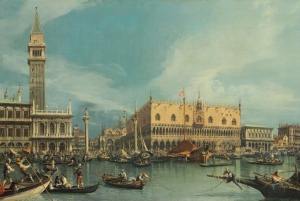
Christie’s evening sale of Old Master & British Paintings, which took place on July 2, 2013 in London, garnered $36.2 million and attracted buyers from 11 countries. Georgina Wilsenach, Head of Old Master & British Paintings at Christie’s London, said, “This sale saw strong prices for paintings from all schools particularly Italian, Flemish and British. We welcomed, once again, bidders from Asia, the Middle East, South American and Russia as well as the traditional markets of Europe and America.”
Canaletto’s (1697-1768) masterpiece, The Molo, Venice, from the Bacino di San Marco, was the evening’s top lot. The work, which is one of the artist’s most celebrated views of Venice, realized $12.8 million, well over its high estimate of $8.9 million. The painting, one of the largest of this particular subject, once belonged to Edward Howard, the 9th Duke of Norfolk and a major patron of British art. The work was passed down through the Duke’s family until the 1970s.
Other highlights from the sale included Peter Paul Rubens (1577-1640) detailed study of a bearded man’s head in profile holding a bronze figure. Created after the artist had returned to Antwerp from Italy, the composition depicts one of the kings featured in Rubens’ monumental Adoration of the Kings (1616-17), which was painted for the Church of Saint John in Mechelen. The study brought $2.6 million, just over its low estimate of $2.2 million.
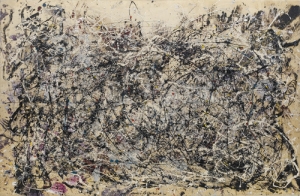
On June 10, 2013, Bank of America announced the recipients of its 2013 Art Conservation Project. The program provides grant funding to international nonprofit museums to conserve historically and culturally significant works of art that are in danger of deterioration.
This year, Bank of America’s Art Conservation Project will provide funding for 24 works in 16 countries. One of the most significant undertakings is the restoration of Simon Rodia’s Watts Towers in Los Angeles. Built between 1921 and 1953, the Watts Towers are an iconic part of the city and have fallen into disrepair. The towers are part of the Los Angeles County Museum of Art. Other projects include the restoration of Jackson Pollock’s (1912-1956) Number 1A, One, and Echo at the Museum of Modern Art; 13 mural drawings by Diego Rivera (1886-1957) at the Detroit Institute of Arts; four Tudor paintings at the National Portrait Gallery in London; a Rembrandt (1606-1669) study at the National Gallery in Prague; and a Frida Kahlo (1907-1954) photography collection at La Casa Azul in Mexico.
Bank of America launched its Art Conservation Project in Europe, the Middle East, and Africa in 2010. It was expanded to include the Americas, Asia, and Australia in 2012. Including this year’s recipients, Bank of America will have funded the conservation of 57 projects in 25 countries.
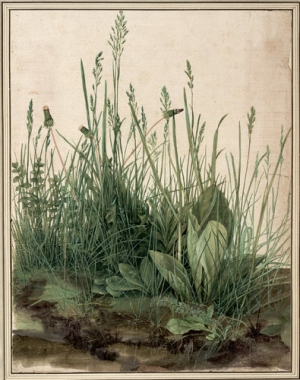
To this day, Albrecht Dürer (1471-1528) is widely considered the greatest German artist ever to live. A master of drawings, watercolors, and engravings, Dürer produced the earliest known self-portrait drawing in European art at the age of 13 as well as some of the first stand-alone landscapes. The craftsmanship of his woodcuts was so exceptional that he singlehandedly changed the public’s perception of the medium from commonplace to fine art.
The National Gallery of Art in Washington, D.C. is currently hosting the exhibition Albrecht Dürer: Master Drawings, Watercolors, and Prints from the Albertina. The Albertina in Vienna, Austria holds one of the finest and largest collections of Dürer’s work including masterpieces such as The Great Piece of Turf, a watercolor nature study of the Renaissance; the beyond iconic chiaroscuro drawing Praying Hands; and his famous self portrait.
Master Drawings, Watercolors, and Prints from the Albertina presents 91 remarkable works from the Albertina as well as 46 related engravings, woodcuts, drawings, and prints from the National Gallery’s own collection. This exhibition, which is the culmination of decades of acquisition, study, and exhibitions of early German art at the National Gallery, will be on view through June 9, 2013.
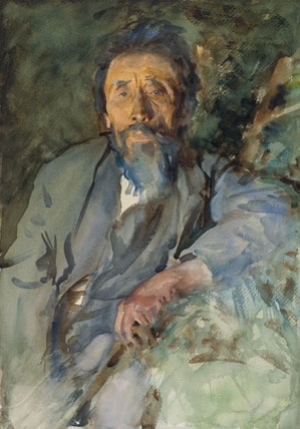
New York’s Brooklyn Museum and Boston’s Museum of Fine Arts are joining forces to present a landmark exhibition of John Singer Sargent’s watercolors (1856-1925). The exhibition, aptly titled John Singer Sargent Watercolors, will bring together 93 works acquired by both museums during the early 20th century. The Brooklyn Museum’s 38 watercolors were largely purchased form Sargent’s 1909 debut exhibition in New York and The MFA’s works were acquired from a New York Gallery in 1912.
The institutions have been working together on a year-long study of Sargent’s watercolors, which he painted fervently. During his long career, Sargent created over 2,000 watercolors depicting everything from the English countryside to Venetian scenes as well as paintings of the Middle East, Montana, Maine, Florida, and the American west. Sargent painted a number of watercolor portraits of Bedouins and fishermen from the Middle East as well as the native people of the American west. A section of the exhibition will be devoted to the findings from the museums’ extensive study; the analysis revealed new insights into Sargent’s drawing techniques, paper preparation, and use of pigments.
John Singer Sargent Watercolors will go on view at the Brooklyn Museum on April 5, 2013 where it will remain until July 28, 2013. The exhibition will then travel to Boston’s Museum of Fine Arts where it will stay from October 13, 2013 until January 20, 2014. The show will make a final appearance at Houston’s Museum of Fine Arts in 2014.

Great and Mighty Things: Outsider Art from the Jill and Sheldon Bonovitz Collection presents over 200 objects from one of the country’s most remarkable collections of works by American self-taught artists. On view at the Philadelphia Museum of Art through June 9, 2013, Great and Mighty Things includes drawings, paintings, sculptures, and other objects by 27 artists who created their oeuvres outside of the mainstream modern and contemporary art worlds.
Jill and Sheldon Bonovitz, who have spent over 30 years assembling their collection, will donate the works in the exhibition to the museum. The exhibition and gift include works by prominent outsider artists such as Martín Ramírez (1895-1963), Howard Finster (1916-2001), Purvis Young (1943-2010), and Bill Traylor (1854-1949) and spans from the 1930s to 2010. The Bonovitz’s generous donation will greatly enhance the Philadelphia Museum of Art’s collection as well as help to establish the institution as one of the primary centers for the study of American outsider art.
Outsider Art, which is known for its raw and out-of-the-ordinary beauty, has become a global phenomenon in the 20th and 21st centuries. Once considered the art of the mentally insane, Outsider Art now holds a prominent place next to modern and contemporary art while maintaining its individual identity.
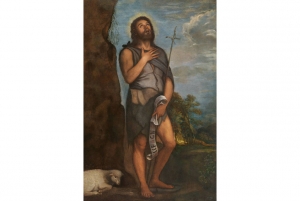
Titian’s Saint John the Baptist entered Madrid’s Museo del Prado’s collection in 1872 but rather than being credited to the Italian painter of the 16th century, it was said to be by an anonymous Madrid School artist of the 17th century. Fourteen years later, the painting was sent to the parish church of Nuestra Senora del Carmen in Cantoria in the province of Almeria where it remained on loan until 2007.
The Prado held an exhibition of Titian’s work in 2003 and published an accompanying catalogue in which Miguel Falomir, Head of the Department of Italian and French Paintings at the Museum and the exhibition’s curator, suggested that the painting in Cantoria was a copy of a long-lost Titian painting. In 2007 the Museum embarked on a study of the work only to find that the piece was not a copy but an original Titian painting. The work’s preparatory layer of white lead and calcium carbonate and the similarities between that painting and two other depictions of Saint John the Baptist done by the artist in the early 1550s helped researchers to date the painting and bolstered their decision to re-attribute the work to Titian.
The work arrived at the Prado in poor condition and underwent thorough restoration by Clara Quintanilla. The will be on display alongside the two other versions until February 10, 2013.
|
|
|
|
|